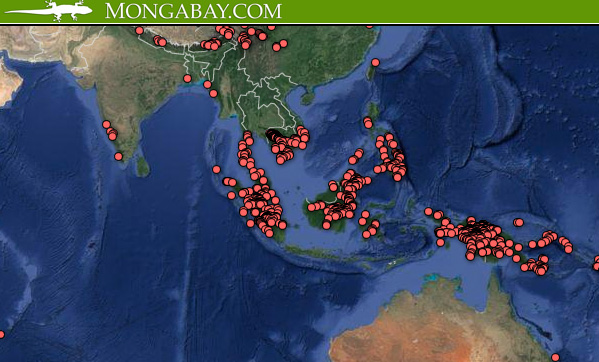Loss of forest cover increased sharply in Bolivia, Madagascar, and Ecuador during the third quarter of 2013, according to an update from NASA scientists.
NASA’s Quarterly Indicator of Cover Change (QUICC), a MODIS satellite-based product that underpins Mongabay.com’s Global Forest Disturbance Alert System (GloF-DAS), picked up strong deforestation signals in the three tropical countries between July 1 and September 30, 2013: Bolivia (167 percent increase in deforestation relative to the year-earlier period), Madagascar (126 percent), and Ecuador (38 percent). Outside the tropics, Pakistan, China, the United States, and Argentina appeared to experience an increase in forest and woodland disturbance.
According to Christopher Potter, a Senior Research Scientist at NASA Ames Research Center who co-led development of the tool, hotspots in each country include:
- Argentina: Large areas of woodland disturbance in the northeast of Salta and Santiago del Estero;
- Bolivia: Large areas of woodland disturbance in the southern region of Santa Cruz and Tarija;
- Ecuador: New areas of forest disturbance in the Tena area of Napo Province;
- Madagascar: New areas of disturbance in the northeast (Ampijoroana);
- China: New areas of woodland disturbance across western Henan Province;
- Pakistan: Expanded woodland disturbance in southeastern Sindh state.
GloF-DAS also showed high levels of forest cover change in the Chocó region of Colombia; Cameroon, Gabon and the Republic of Congo; Cambodia; and Sumatra, Kalimantan, and Indonesian New Guinea.
GloF-DAS relies on NASA’s Moderate Resolution Imaging Spectroradiometer (MODIS) sensor to detect changes in forest greenness cover relative to the year-earlier period. It registers change in all forest and woodland areas that have lost at least 40 percent of their green vegetation cover over the past year. Seasonal variation is generally mitigated through the product’s quarterly baseline, although changes in some parts of the world, like boreal regions, can be affected by snow and ice distribution.
The tool can help highlight areas where deforestation and forest degradation is occurring on a quarterly basis, potentially providing insight to authorities, policymakers, civil society, local communities, and academics.
GloF-DAS was developed in a partnership between NASA Ames Research Center, Cal State Monterey Bay, and Mongabay.com.








